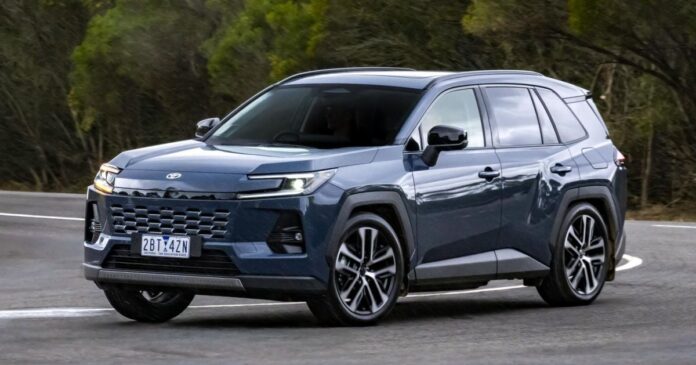The Toyota RAV4 is, without a doubt, the most important SUV in Australia. It doesn’t just sell well; it completely dominates the segment, outselling its nearest rivals combined to become Australia’s most popular SUV bar none – and the Japanese brand’s top-seller – in 2024.
But now there’s a new one. The sixth-generation model arrives in 2026 with a tough new look, a brand-new interior, and, for the first time in Australia, a plug-in hybrid (PHEV) powertrain option.
But it also comes with a significant price hike and, for the regular hybrid, a reduction in power. We went to Toyota’s proving ground for a brief, early drive of the new model to see if the king can keep its crown.
How much does the Toyota RAV4 cost?
This is where you’ll need to sit down. The price for Australia’s favourite SUV has gone up, and not by a small amount.
2026 Toyota RAV4 HEV
| Model | Price before on-road costs |
|---|---|
| 2026 Toyota RAV4 GX FWD | $45,990 (+$3730) |
| 2026 Toyota RAV4 GX AWD | $49,340 (+4080) |
| 2026 Toyota RAV4 GXL FWD | $48,990 (+3180) |
| 2026 Toyota RAV4 GXL AWD | $52,340 (+3530) |
| 2026 Toyota RAV4 Edge AWD | $55,340 (-$3020) |
| 2026 Toyota RAV4 XSE AWD | $58,340 (-$5755) |
| 2026 Toyota RAV4 Cruiser FWD | $56,990 (+$5580) |
| 2026 Toyota RAV4 Cruiser AWD | $60,340 (+$5930) |
2026 Toyota RAV4 PHEV
| Model | Price before on-road costs |
|---|---|
| 2026 Toyota RAV4 XSE FWD | $58,840 (new) |
| 2026 Toyota RAV4 XSE AWD | $63,340 (new) |
| 2026 Toyota RAV4 GR Sport AWD | $66,340 (new) |
The range now starts with the GX 2WD Hybrid at $45,990 before on-road costs – a $3730 jump over the outgoing base model.
The price hikes are steep across the board. The popular Cruiser 2WD is up by $5580, and the new XSE AWD hybrid (which replaces a lower-spec variant) is $6430 more expensive.
The big news is the introduction of three plug-in hybrid (PHEV) variants, which command a significant premium. The range now tops out with the GR Sport AWD PHEV at $66,340 before on-road costs.
There is one model variant that gets a price cut: the adventure-focused Edge AWD HEV is $3020 cheaper, but Toyota notes it has been “repositioned”, so it’s likely lost some of the kit from the old flagship to achieve that.
To see how the Toyota RAV4 lines up against the competition, check out our comparison tool
Let us help you find your new car
Buy your new car without the stress. It’s fast, simple and completely free.

Great service from Travis and team, second time I have used this business would not hesitate to recommend them to anyone
Craig C.
Purchased a Ford Ranger in Sunshine Coast, QLD
CarExpert helped Craig save thousands on his Ford Ranger, now let us save you on your next new car.
Find a deal
What is the Toyota RAV4 like on the inside?
If the old RAV4 had an Achilles’ heel, this was it. The interior felt dated, and the infotainment system looked like it was from the 1990s. This new model, thankfully, is a massive step forward.

The biggest change is the new tech, which is a genuine game-changer for Toyota and finally brings the RAV4 into the 21st century.
All models get a 12.3-inch fully digital instrument cluster as standard, which is clear, easy to read, and configurable.
It’s paired with Toyota’s latest-generation multimedia system, which is housed in a 10.5-inch screen in the GX, or a larger 12.9-inch unition the Edge, XSE, and Cruiser. It’s so much faster than the old system and looks infinitely better.
Wireless Apple CarPlay and Android Auto are finally standard, along with embedded satellite navigation.

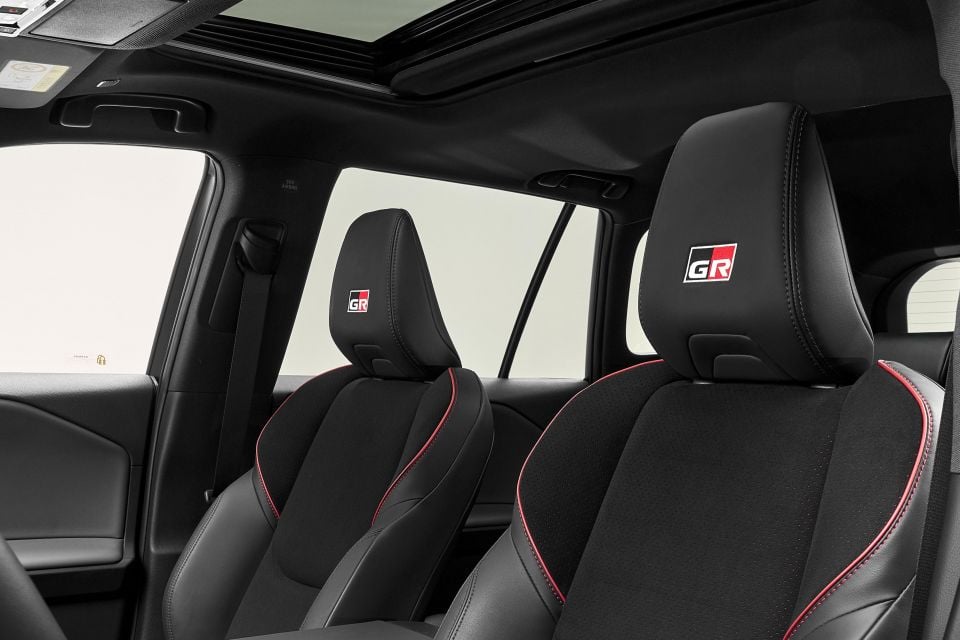
One of the coolest new features, which is also standard across the range, is the Embedded Drive Record. This uses the car’s forward-facing safety camera as a built-in dashcam, which is a function we think should be standard in all new cars.
The cabin also gets Toyota’s latest Connected Services, allowing you to check the car’s status or (we expect) operate functions like the climate control from your phone.
Practicality, a hallmark of the RAV4, continues to be a strong point. You still get two big cupholders, storage beneath the wireless charging pad (standard from GXL), and a massive centre console bin.
There’s also a clever ‘Easter egg’ with the centre armrest. You can pull a tab and the top section comes out, making it able to be used as a small tray. It’s a smart touch that’ll be genuinely useful for families on the move.
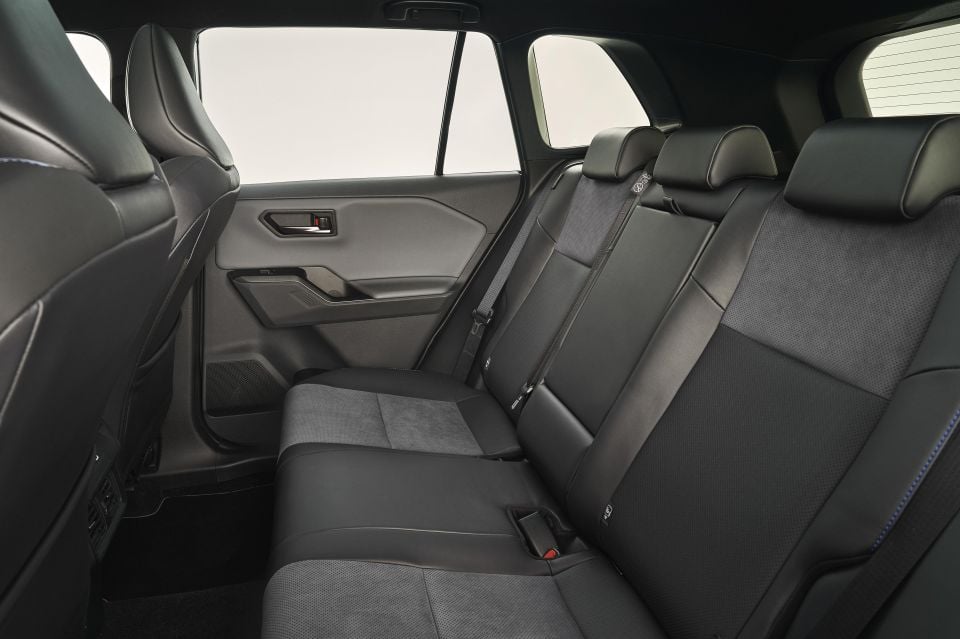
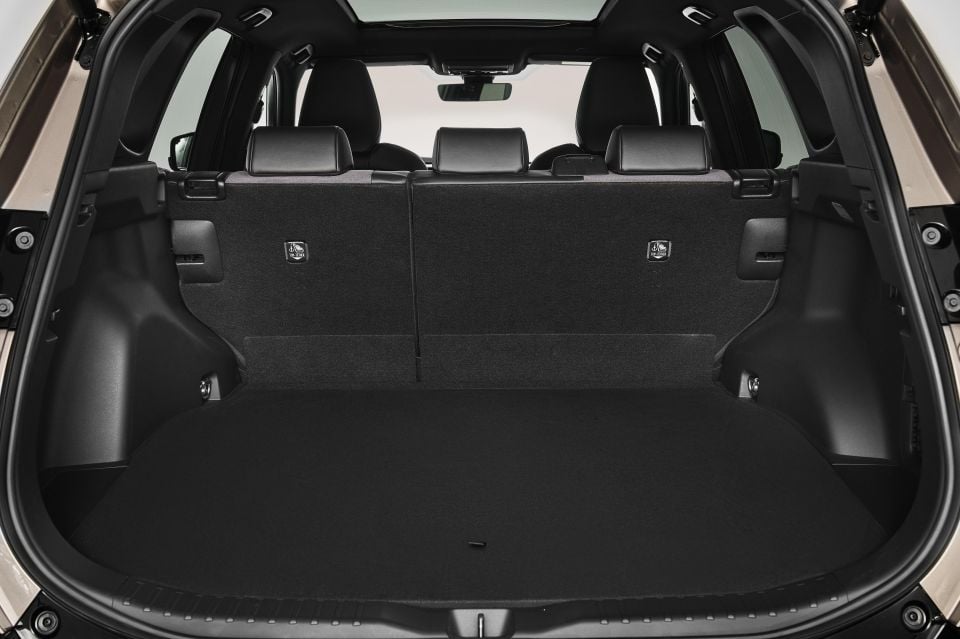


The new steering wheel feels nice in the hands, and in upper-spec models like the Cruiser and GR Sport, you get a new shift-by-wire gear lever that cleans up the centre console.
The second row is still an adult-friendly zone with plenty of room for passengers. On the charging front, the base GX gets five USB-C ports, which is a great inclusion. However, in the pre-production cars we saw, these were only 15W ports.
That’s not exactly going to break the mould for charging a modern device, especially while running wireless CarPlay. You have to step up to the flagship GR Sport to get faster 45W USB-C charging.
The wireless phone charger (on GXL and up) also didn’t appear to have any active cooling, which is something we hope to see in production vehicles, as phones tend to get hot on these pads, especially on long drives.
To see how the Toyota RAV4 lines up against the competition, check out our comparison tool
What’s under the bonnet?
This is a hybrid-only range for the first time, but it’s split into two very different types of hybrid.

| Specifications | RAV4 Hybrid | RAV4 PHEV |
|---|---|---|
| Engine | 2.5-litre 4cyl hybrid | 2.5-litre 4cyl PHEV |
| Engine outputs | TBC | TBC |
| Electric motor outputs | TBC | TBC |
| System outputs | 143kW | 200kW(FWD) 227kW (AWD) |
| Battery | TBC | 22.7kWh lithium-ion |
| Transmission | e-CVT | e-CVT |
| Drive type | FWD or AWD | FWD or AWD |
| Electric driving range | – | 100km (WLTP) |
| Max AC charge rate | – | 11kW |
| Max DC charge rate | – | 50kW |
All hybrid variants (GX, GXL, Edge, XSE, Cruiser) come with Toyota’s fifth-generation 2.5-litre series-parallel hybrid system.
The big news here is a reduction in power for the Australian market, which Toyota blames on emissions standards. The combined peak output for both 2WD and AWD models is now 143kW, down from 160kW in the outgoing 2WD and 163kW in the outgoing AWD.
The XSE and GR Sport models get Toyota’s first plug-in hybrid system for Australia. This is all about performance.
It pairs a 2.5-litre petrol engine with a much larger 22.7kWh lithium-ion battery and more powerful electric motors.
- PHEV 2WD (XSE):200kW combined output
- PHEV AWD (XSE, GR Sport):227kW combined output (making it the most powerful RAV4 ever)
Toyota is targeting an EV-only driving range of up to 100km (WLTP).
Crucially, the system supports both 11kW AC charging and 50kW DC fast-charging, which is rare for a PHEV and means you can get a 10-80 per cent top-up in around 30 minutes.
To see how the Toyota RAV4 lines up against the competition, check out our comparison tool
How does the Toyota RAV4 drive?
This is a carry-over platform, so Toyota hasn’t exactly reinvented the wheel. But while the underpinnings are familiar, there are fundamental changes to the way it drives – some good, some not so good.
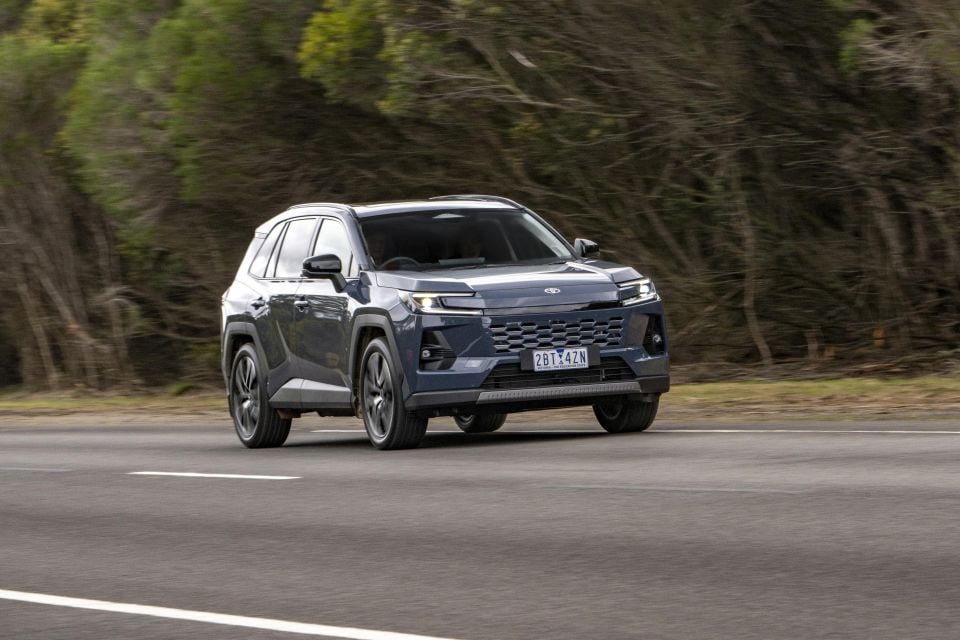
The biggest change for the Australian-market hybrid is a reduction in power. Toyota says we’re ‘strangled’ by emissions controls, and the new 2.5-litre hybrid system now has a combined peak output of just 143kW.
That’s a significant drop from the 160kW in the previous 2WD and 163kW in the old AWD. You can certainly feel that deficit behind the wheel. We drove the new car back-to-back with the existing RAV4, and under full throttle it just doesn’t feel anywhere near as punchy.
The trade-off, however, is a noticeable improvement in refinement. The current RAV4 can sound thrashy when you’re on the throttle and the CVT is flaring, but this next-generation car feels significantly smoother. The way it delivers its (reduced) torque is more refined, and Toyota has clearly put work into sound deadening.
Brake pedal feel is also a strong point. Toyota has done a good job of managing the transition between regenerative braking and the friction brakes – an area where many hybrids feel inconsistent. This feels natural and comes to a stop smoothly.
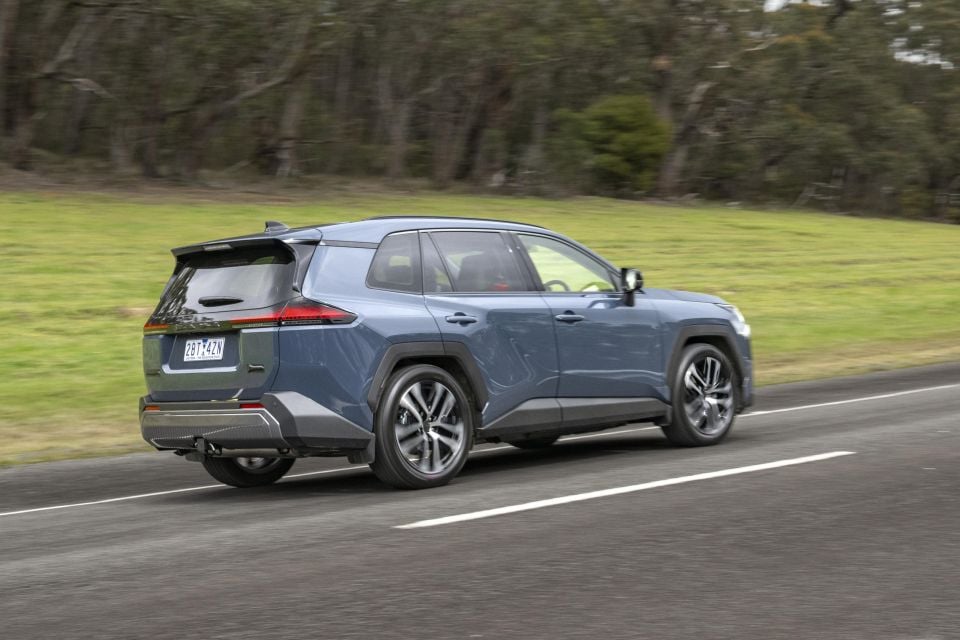
The ride quality also feels like a step up. We drove on both sealed and unsealed surfaces, and you can feel this car has been built to work for regional Australia. On corrugated gravel roads, there was no real concern – it felt nice and stable.
The one major area of concern was the over-eager safety aids.
On the gravel road, even with no lines, the lane-keep system would constantly try and ‘correct’ the steering, veering the car on the loose surface.
That’s the sort of interference you simply do not want. Worse, you can’t quickly switch it off via the steering wheel; you have to dig through sub-menus to turn it off. One of the other journalists reported that even when it was switched off, it still nagged.

On the plus side, the driver distraction monitor didn’t go off too much for us, so it’s not all bad news on the ‘nanny’ front. We didn’t get to drive the all-new PHEV models, as they aren’t landing until later in 2026.
However, we have driven the current generation plug-in hybrid RAV4 (sold as the ‘Prime’ overseas), and we were genuinely blown away. It’s properly quick – like a hot hatch. It is so rapid, so efficient, and lovely to drive.
If that’s anything to go by, the new flagship GR Sport AWD PHEV with its 227kW output should be a rocket. Even the base 2WD PHEV makes 200kW.
With a large 22.7kWh battery, a 100km EV range target, and rare 50kW DC fast-charging capability, the tech is impressive. The only problem could be its $66k-plus price tag, especially now that most PHEV subsidies are gone.
To see how the Toyota RAV4 lines up against the competition, check out our comparison tool
What do you get?
The new range is broad, with 11 variants. Here’s a breakdown of the key equipment.


2026 Toyota RAV4 GX equipment highlights:
- 17-inch dark grey metallic alloy wheels
- LED headlights
- 10.5-inch multimedia touchscreen
- 12.3-inch digital instrument cluster
- Wireless Apple CarPlay and Android Auto
- Embedded satellite navigation
- Embedded Drive Record (dashcam)
- Dual-zone climate control
- Fabric upholstery
- Six-speaker audio system
- 5x USB-C ports
- Reversing camera
- Full Toyota Safety Sense suite
RAV4 GXL adds (over GX):
- 18-inch alloy wheels
- Privacy rear and side glass
- Silver-painted front and rear skid plates
- Premium interior trims (doors, dash)
- Leather-accented steering wheel and shift knob
- 8-way powered driver’s seat with lumbar support
- Rain-sensing wipers
- Wireless smartphone charger
RAV4 Edge (AWD HEV) adds (over GXL):
- Dark matte grey metallic alloy wheels
- Unique front and rear bumpers
- Wider black wheel-arches
- 12.9-inch multimedia touchscreen
- Premium trim upholstery
- Heated front seats
- Powered tailgate
RAV4 XSE (AWD HEV) adds (over GXL):
- 20-inch black alloy wheels
- Black front and rear bumpers
- Two-tone exterior paint
- Panoramic view monitor (360-degree camera)
- Enhanced LED headlights
- Combination premium trim and suede upholstery
- Climate concierge
- 3-stage heated and ventilated front seats
- 8-way powered front passenger seat
- Driver’s seat memory
- Tilt and slide moonroof
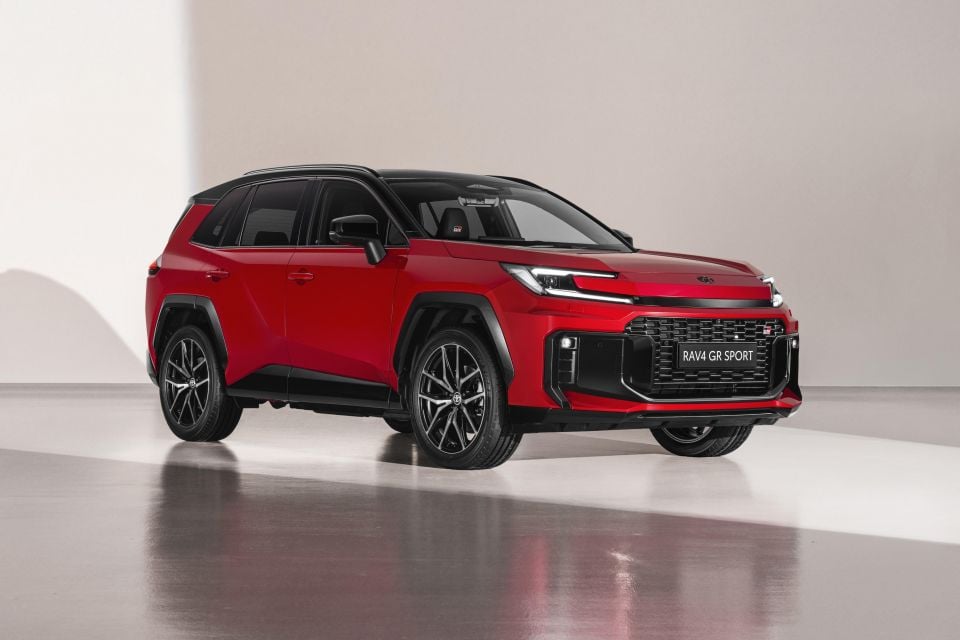
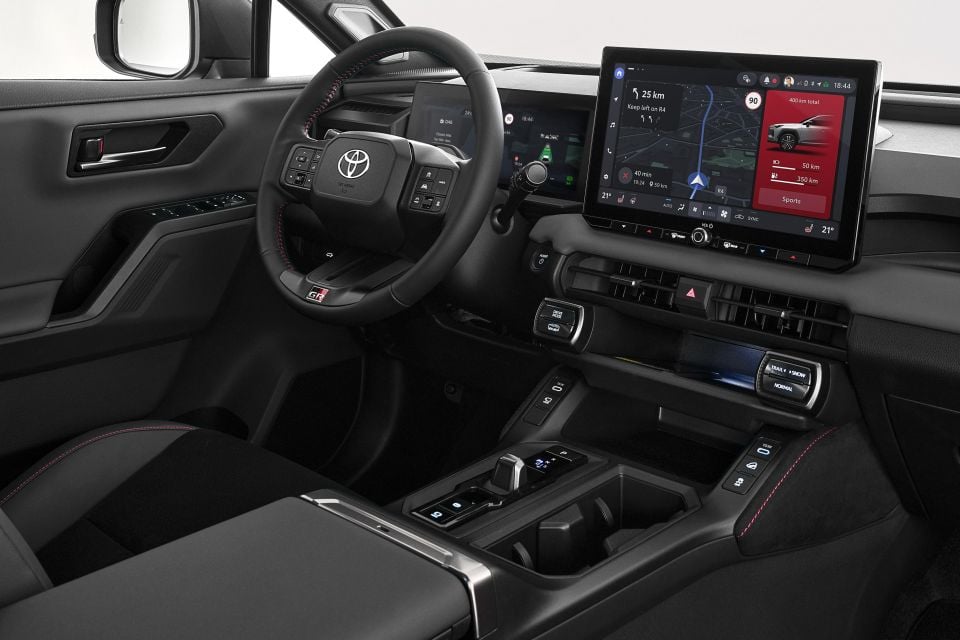
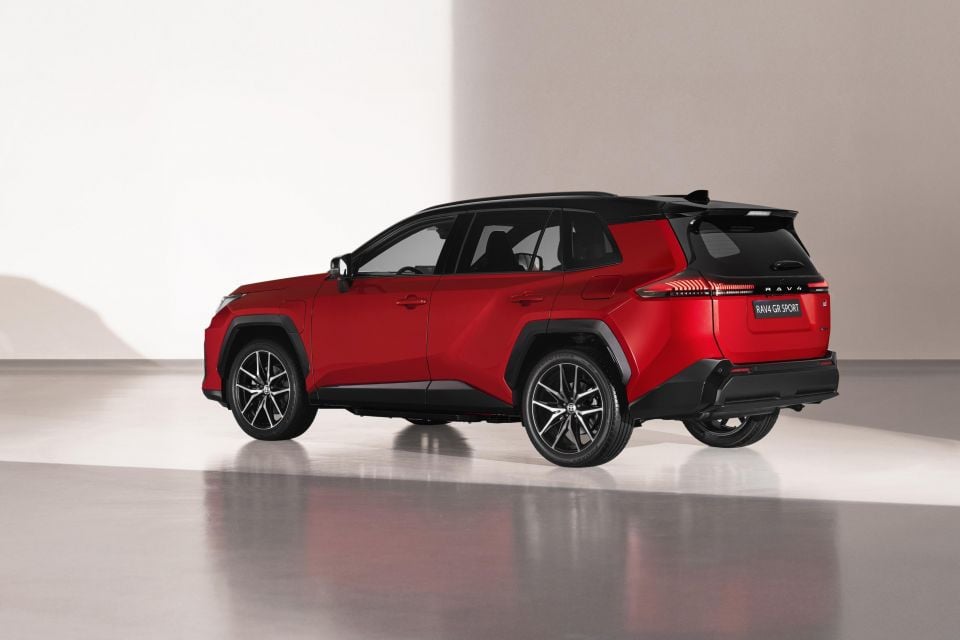

RAV4 Cruiser adds (over GXL):
- 20-inch machined black alloy wheels
- High-grade LED headlights
- Tilt and slide panoramic moonroof
- Genuine leather-accented seat trim
- Driver memory seats
- Shift-by-wire gear lever
- Head-up display (HUD)
- Digital rear-view mirror
- Heated outboard rear seats
- Powered tailgate with kick sensor
- Two wireless smartphone chargers
- 9-speaker JBL premium audio system
RAV4 XSE PHEV adds (over XSE HEV):
- Larger disc brakes
- 1500W inverter in the cargo area
RAV4 GR Sport PHEV adds (over XSE PHEV):
- GR-specific mechanicals (front damper, rear brace, unique springs)
- 20mm wider track
- Exclusive electric power steering tune
- Unique front and rear bumpers, wing-type spoiler
- Red brake calipers
- Aluminium pedals
- GR Sport heated steering wheel with paddle shifters
- GR logos and red stitching
- Premium trim and suede upholstery
- Digital rear-view mirror
- 45W USB-C charging ports
- Head-up display (HUD)
- Powered tailgate with kick sensor
- Two wireless smartphone chargers
- 9-speaker JBL premium audio system
To see how the Toyota RAV4 lines up against the competition, check out our comparison tool
Is the Toyota RAV4 safe?
The 2026 Toyota RAV4 has not yet been crash-tested by ANCAP, so it remains unrated.

However, the list of standard safety equipment is comprehensive, even for the base GX. All models get the next generation of Toyota Safety Sense.
Standard safety features include:
- 8 airbags
- Autonomous emergency braking (AEB)
- Emergency steering assist
- Full-speed active cruise control
- Front and rear cross-traffic alert
- Lane trace assist
- Proactive driving assist
- Automatic high beam
- Blind-spot monitor
- Safe exit assist
The inclusion of front and rear cross-traffic alert, plus a blind-spot monitor with safe exit assist, for the absolute base model is a solid tick.
To see how the Toyota RAV4 lines up against the competition, check out our comparison tool
How much does the Toyota RAV4 cost to run?
Toyota Australia has not yet confirmed servicing costs for the new-generation RAV4, but we expect it to be covered by the brand’s standard five-year, unlimited-kilometre new vehicle warranty.

The outgoing model came with capped-price servicing for the first five years or 75,000km, with each 12-month/15,000km service costing $260.
We’ll have to wait and see if the new model – with its price hikes – can maintain this.
To see how the Toyota RAV4 lines up against the competition, check out our comparison tool
CarExpert’s Take on the Toyota RAV4
To say the RAV4 dominates the market is an understatement. It isn’t just a sales leader; it’s in another league.
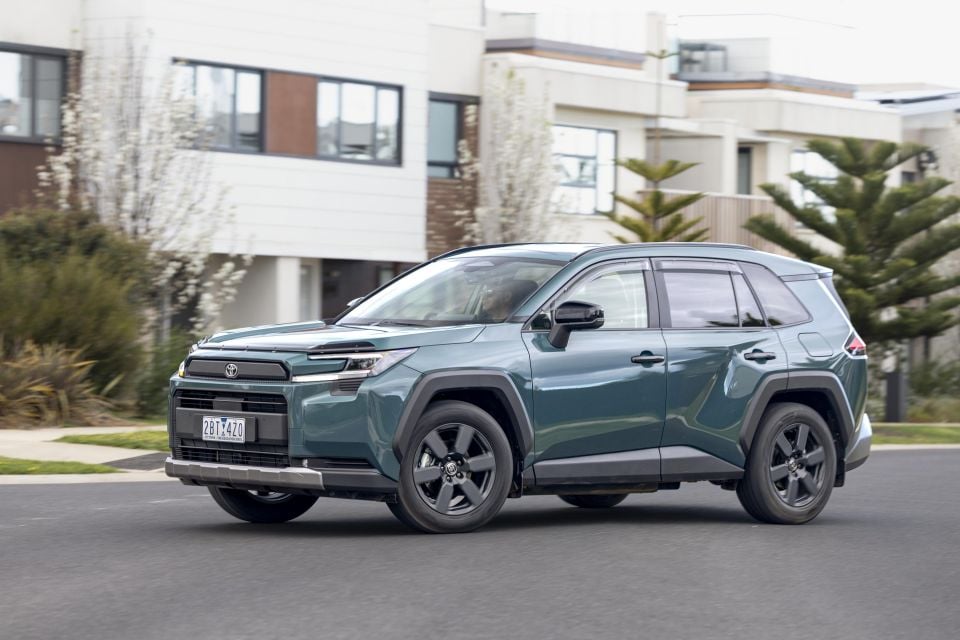
Trusted Reviews, Smarter Choices, Better Prices
Where expert car reviews meet expert car buying – CarExpert gives you trusted advice, personalised service and real savings on your next new car.
According to the latest VFACTS sales data from October 2025, Toyota sold 4401 RAV4s last month alone. Its nearest competitor in the mainstream Medium SUV segment, the Mazda CX-5, managed just 1813 sales.
The year-to-date figures tell the same story. As of the end of October, Toyota has sold 39,519 RAV4s. The next-best CX-5 (18,842) and Mitsubishi Outlander (18,517) combined still don’t match the RAV4’s total.
It’s a genuine bloodbath, and it’s the market Toyota has to lose. This new model addresses the old car’s biggest weakness – its dated interior and infotainment – which will be a huge relief for buyers.

The challenge for many will be pricing. A $3730-plus entry-level price hike pushes the RAV4 further into premium territory.
While buyers have proven they’re willing to pay a ‘Toyota tax’ and wait years for a RAV4 hybrid, these new prices will test that loyalty, especially with strong-value rivals from Kia, Hyundai, and GWM.
The new PHEV variants enter a different battle, facing off against the Outlander PHEV and a wave of incoming Chinese plug-in hybrids and full EVs.
Its big 227kW output and 50kW DC fast-charging capability give it a serious performance and tech edge, but its $66k-plus price tag puts it in a whole new bracket.
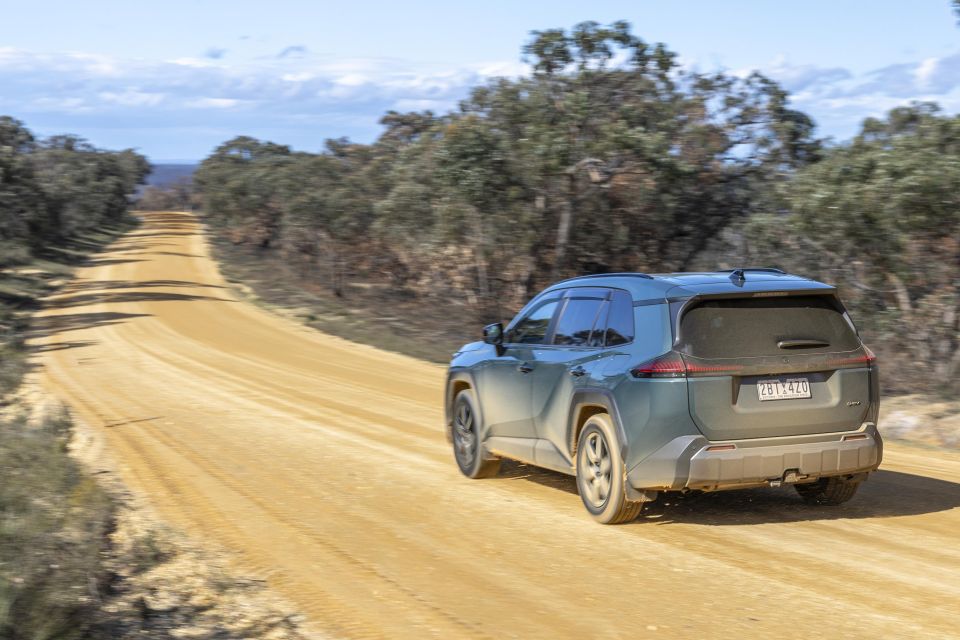
Interested in buying a Toyota RAV4? Let CarExpert find you the best deal here
Click the images for the full gallery
MORE: Explore the Toyota RAV4 showroom
